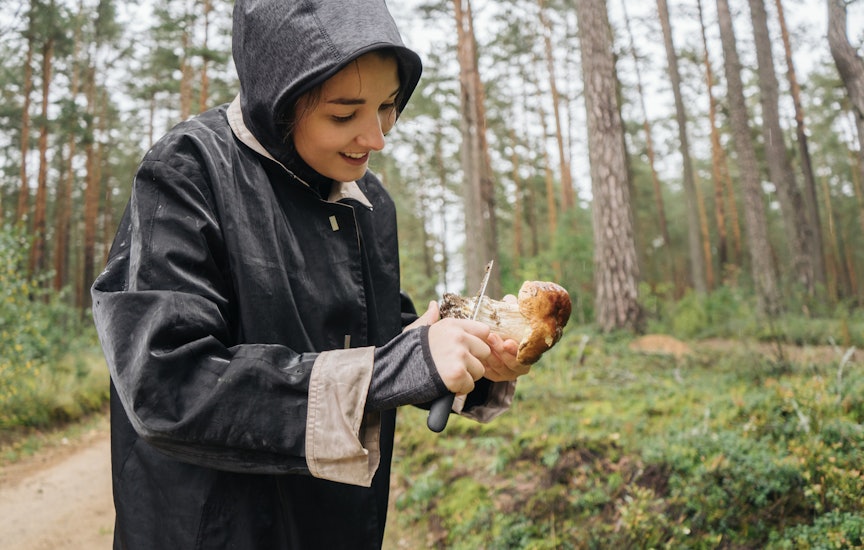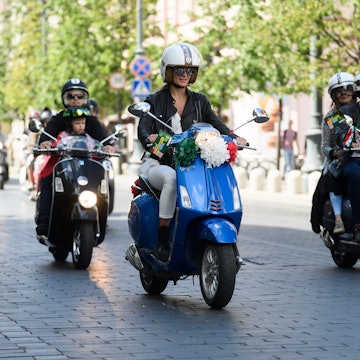

The Lithuanian capital, Vilnius, is the country's largest and liveliest city. It's been a Lithuanian centre of power for centuries, going back to the days of the Lithuanian dukes, but successive waves of Polish, Russian and Jewish influence have lent a cosmopolitan flavour that other large Lithuanian cities lack.
The small footprint makes it perfect for a city break; it's compact enough to cover comfortably in 48 hours, yet packs enough diversity to cater to many interests. Here below are our picks for two great days in the city.
Day One: Crash Course in Lithuanian History
Spend the better part of the first day brushing up on your Lithuanian history. Get an early start and head to Cathedral Square, the heart of the city and home to Vilnius Cathedral. The austere neoclassical exterior dates from the late-18th century, though the origins of the church go back to pagan times. Don't miss the beautiful, baroque St Casimir's Chapel at the back of the church.

Walk along the southern side of the cathedral to find an imposing equestrian statue of one of the country's most successful early rulers, the 14th century's Grand Duke Gediminas, and the entrance to the former Palace of the Grand Dukes of Lithuania. It took more than a decade and hundreds of millions of euros to rebuild the former royal seat, which finally reopened in 2013. The result is a touristic tour de force: part archaeology museum, part history museum.
If you're in the mood for more history, to the northern side of former palace, the National Museum of Lithuania tells the country's story all the way up to World War II. The temporary exhibitions here are well worth checking out, as is the extensive section on folk costumes and crafts.
Before planning your assault on Gediminas Hill, it's time for a break and lunch. For something light and local (and a short walk away), we love Pilies kepyklėlė for authentic pancakes and inventive soups and salads.
There are two ways to scale 50m-high Gediminas Hill and reach sombre yet dignified 13th-century Gediminas Tower. If you're in the mood for a hike, climb the pathways along the hill's southern face. Otherwise, walk to the northern side, where a funicular whisks you to the top in a few minutes. The views over the Old Town are breathtaking. The Tower Museum has a small collection of medieval armour and even better views at the top.

In the evening, celebrate your new-found knowledge of Lithuanian history with a meal at Lokys, one of the city's best traditional restaurants. There's folk music and dancing on the main floor or ask to be seated in the quieter Gothic cellars. The specialty here is grilled meat and game, including a once-in-a-lifetime chance to sample some real beaver stew (no kidding).
For sleeping, Vilnius has loads of decent options to meet every budget. Hostelers will want to check out Jimmy Jumps House (jimmyjumpshouse.com), a clean, well-run hostel offering dorm accommodation in four- to 12-bunk rooms as well as waffle breakfasts and themed pub crawls.
For guesthouses, we love Bernardinu B&B, a family-owned outfit in an 18th-century building with lots of period touches like wood-beamed ceilings. Just across the street from Bernardinu B&B, Shakespeare is an upmarket boutique situated in another atmospheric townhouse that was once passed down by noble families.
Day Two: Out and About in the Old Town
There are lots of cobbles to conquer so be sure to choose a comfortable pair of shoes. Start the day at Pilies gatvė (Castle St.), just opposite Cathedral Square. The Old Town's confusing street plan was laid out in the Middle Ages, so there's no point in being logical about it. The fun lies in choosing a promising lane and wandering at will.

Vilnius is a city of churches and the most charming of all might be the elegant, red-brick St Anne's Church (paired with the larger St Bernardine's Church in the back) to the east of Pilies gatvė. Just south of here is the quirky Užupis neighbourhood, a self-declared 'republic' of artists and free-thinkers (and a fair number of good restaurants and bars).
Return in the direction of Pilies gatvė and walk west into the Old Town to see the buildings of Vilnius University and count its fabled 13 (or 12, depending on who's counting) courtyards. Vilnius is filled with thousands of students, which give the place its energy and youthful vibe.
Pilies gatvė eventually leads into busy Didžioji gatvė and to a large square fronted by the impressive Town Hall. For lunch or a break, dart down tiny Savičiaus gatvė to find Balzac, a warm French bistro with wines by the carafe and a killer tarte tatin.
Just across from the Town Hall, peak inside another beautiful baroque church, St Casimir's (not to be confused with the chapel of the same name). Walk south along Aušros vartų gatvė to find the Gates of Dawn, the last-standing of ten portals built into the walls that once surrounded the Old Town. This largely unadorned 16th-century entryway is something of a letdown (given the breathtaking name), though the Chapel of the Blessed Mary inside holds a painting, the Madonna of the Gates of Dawn, which is said to work miracles.

Finish the afternoon wandering the tiny alleyways, like beautiful Stiklių gatvė, that start just west of the Town Hall. Stiklių gatvė was once part of the city's Jewish quarter, but these days it is filled with bars and boutiques. Finish up with some wining and fine-dining at elegant Bistro 18, down a couple of blocks along Stiklių gatvė.
Mark Baker is an independent travel writer, based in Prague. He's a frequent traveller to the Baltics and co-author of Lonely Planet's guide to Estonia, Latvia and Lithuania.
















